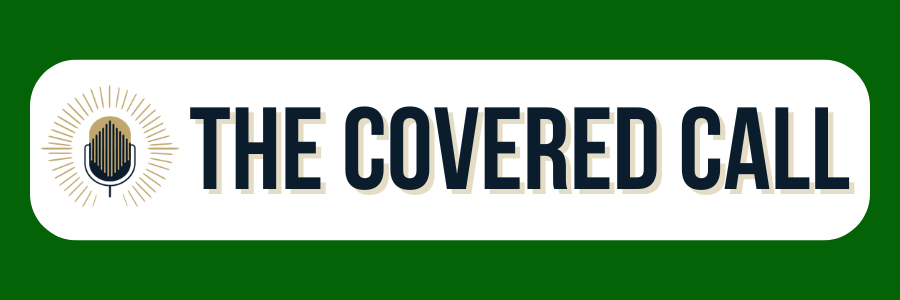Understanding Early Retirement Today
The traditional path of working until 65 is becoming less common. More professionals are seeking ways to exit the workforce earlier, driven by their desire to control their time and pursue personal interests. This shift stems from new approaches to work, smarter investing methods, and changing priorities around life balance.
How Economic Changes Are Shaping Retirement
Recent economic events have created both new possibilities and hurdles for early retirement. The rise of remote work during the COVID-19 pandemic has given workers more options and sometimes lower costs. While this flexibility can help people build additional income streams to reach financial independence sooner, market ups and downs remain a key challenge. Success requires thoughtful planning and the ability to adapt long-term strategies.
The pandemic's effect on retirement trends has been notable. As of April 2023, there were 2.4 million more retirees in the U.S. than expected based on previous patterns. The shift began early in the pandemic when the labor force participation rate dropped from 63.3% in February 2020 to 60.1% in April 2020 - the biggest decline ever recorded. Learn more from the Federal Reserve Bank of St. Louis research. These numbers show how unexpected events can quickly change retirement patterns, highlighting why early retirees need backup plans.
Moving Past Traditional Timelines
The idea that everyone should retire at 65 is becoming outdated. More people are choosing to set their retirement age based on their own financial situation and lifestyle goals rather than following societal norms. This is especially true for those who value experiences and personal growth over meeting others' expectations. It requires active financial planning and being open to non-traditional career choices.
Key Steps for Early Retirement
Successfully retiring early requires working on multiple areas at once:
- Remote work benefits: Working remotely can cut commuting costs and let you live in less expensive areas while keeping your income
- Smart investment planning: Focus on growing wealth long-term through diverse investments while managing risk levels
- Intentional spending: Match your expenses to what matters most to you and prioritize meaningful experiences over buying things
These approaches work together to help build financial independence and create a rewarding life outside of traditional employment. The key is to plan carefully, stay flexible, and be ready to adjust as circumstances change.
Crafting Your Early Retirement Blueprint

Making early retirement happen takes careful planning and preparation. It's time to move beyond just dreaming about it and create specific goals you can actually achieve. Let's walk through how to build your personal roadmap to financial independence.
Assessing Your Financial Needs
Start by getting clear on exactly how much money you'll need. This means doing the math on your expected costs, accounting for inflation, and thinking through potential lifestyle changes. Will you spend more time traveling? Move to a smaller home? Your answers shape how much you need to save.
Your next step is distinguishing between essential expenses and optional spending. Early retirement offers freedom, but it requires smart money management. Build a detailed budget that matches your retirement vision - this becomes the backbone of your entire plan.
Developing a Realistic Timeline
With your financial target set, map out how long it will take to reach it. Consider your current savings rate, investment approach, and expected returns. Being honest with yourself here is essential.
Your investment choices affect your timeline. More aggressive investing could mean retiring sooner but with higher risk. A conservative path might take longer but offer more stability. According to recent research, there's often a gap between when people plan to retire and when they actually do. See the full statistics in this Employee Benefit Research Institute report.
Setting Milestone-Based Goals
Break your big early retirement goal into smaller, achievable targets. These could be specific savings amounts, debt payoff dates, or investment performance markers.
Think of early retirement like climbing a mountain - you need rest stops along the way. Each milestone you hit builds confidence and keeps you going. Celebrating these small wins helps maintain focus on your ultimate goal.
Navigating Market Cycles and Life's Uncertainties
Markets go up and down, and life throws curveballs. Your early retirement plan needs to handle both. Regular reviews and adjustments help keep you on track.
Smart early retirees build in safety margins. This might mean a bigger emergency fund, diverse investments, or multiple income sources. Just as a good captain adjusts course in rough seas, your plan should flex with changing conditions. For practical insights on managing these challenges, check out The Covered Call Podcast, where experienced investors share their strategies for building financial independence.
Mastering Investment Strategies for Early Freedom
Starting your journey to early retirement requires more than just saving - you need to invest wisely to build substantial wealth. Let's explore proven strategies to help you reach financial independence sooner.
Balancing Growth and Risk
The path to early retirement requires carefully weighing growth opportunities against potential risks. Your investments need to grow enough to support decades of retirement, while avoiding excessive risk that could derail your plans. Understanding your personal risk tolerance is essential - how comfortable are you with market swings versus steady, predictable returns?
Consider how your age affects this balance. Someone in their 30s might choose more stocks for higher potential returns, accepting short-term volatility. In contrast, those approaching their target retirement date often shift toward bonds and other stable investments to protect their capital.
Portfolio Construction for Early Retirement
Think of building your investment portfolio like constructing a house - you need a solid foundation with the right mix of materials. Key components include:
- Stocks: Higher growth potential but more market volatility
- Bonds: Steady income and stability with modest returns
- Real Estate: Regular rental income plus property appreciation, requires significant upfront capital
- Alternative Assets: Options like commodities or peer lending for added diversification
A strong portfolio spreads investments across different types of assets. This helps protect your wealth when certain investments underperform.
Building Passive Income Streams
Creating passive income - money that flows in regularly without constant work - gives you financial stability without depleting savings. Here are proven approaches:
- Dividend Investing: Choose established companies with solid dividend histories. Look for businesses with strong financials and sustainable payout ratios.
- Real Estate Income: Rental properties provide steady cash flow but require ongoing management. REITs offer an easier way to earn real estate income.
- Additional Income Sources: Consider peer lending platforms, digital product sales, or small online businesses to diversify your income streams.
Avoiding Investment Pitfalls
Watch out for these common mistakes on your path to early retirement:
- Return Chasing: Don't fall for promises of quick wealth. Focus on proven, long-term strategies instead of risky speculation.
- Emotional Decisions: Market drops are normal. Stick to your investment plan rather than selling in panic.
- Hidden Fees: Investment costs reduce your returns over time. Choose low-cost index funds when possible.
- Poor Diversification: Spread your investments across different assets to manage risk effectively.
Building wealth for early retirement takes time and discipline. Stay focused on your long-term strategy while avoiding common investment mistakes. With patience and smart planning, you can create the financial freedom you want.
Optimizing Your Financial Efficiency

Early retirement requires more than just investing - you need to be smart about how you handle every dollar. Making your money work harder means finding the right balance between saving strategically and spending mindfully. Here's how to boost your savings and build habits that support your goals.
Identifying and Eliminating Financial Drains
Small expenses can really add up over time, just like drips from a leaky faucet. Take a close look at your monthly charges - especially recurring ones like subscriptions, entertainment costs, and dining out. Save $50-100+ per month by canceling unused services like gym memberships or streaming platforms you rarely use.
Watch out for lifestyle inflation as your income grows. Many people automatically increase their spending when they earn more. Instead, keep your basic lifestyle steady even as you earn more. This means resisting unnecessary upgrades to cars or housing just because you can afford them. Focus on building wealth for the future.
Automating Your Savings and Investments
Set up automatic transfers from checking to savings and investment accounts each month. This removes emotion from the equation and ensures consistent progress toward your goals. Think of it like putting your savings on cruise control - you'll steadily move forward without having to think about it.
Automate your bill payments too. This helps you avoid late fees and keeps your credit score strong. Schedule automatic payments for regular expenses like utilities and housing payments to stay on track effortlessly.
Sustainable Lifestyle Adjustments for Long-Term Success
Making changes to retire early doesn't mean giving up what you enjoy. Focus on sustainable shifts that fit your values and objectives. For example, cook more meals at home, find free local activities, or cut transportation costs creatively.
Walking or biking for short trips saves gas money and parking fees while keeping you healthy. Check out free community events and your local library's resources for entertainment. Small daily choices like these build significant savings over time without feeling restrictive.
Real-World Examples and Maintaining Progress
Look at what successful early retirees actually do - they focus on experiences over stuff, build passive income, and track their spending carefully. They also stay flexible as life circumstances and markets change over time.
Review your financial plan regularly and adjust as needed. Like an experienced sailor watching weather conditions, be ready to adapt your approach when situations shift. Smart money management combined with intentional spending choices creates your path to early retirement. For more practical insights from people who've done it, check out The Covered Call Podcast. Their real-world stories and advice can help keep you motivated on your journey to financial freedom.
Securing Your Health and Wellbeing

Getting healthcare coverage right is essential for early retirement success. Without proper planning, medical costs can quickly drain your savings and derail your plans. Let's explore how to manage healthcare before you qualify for Medicare - a key consideration if you want to retire early.
Understanding Healthcare Options Before Medicare
Most people rely on employer health insurance, which ends when you leave your job. This creates a coverage gap until Medicare eligibility at age 65. Here are the main options to bridge this gap:
COBRA Coverage: You can keep your employer's plan for up to 18 months, but you'll pay the full premium cost. While convenient short-term, the high cost makes it impractical for many as a long-term solution.
ACA Health Insurance: The Healthcare.gov marketplace offers various plans and possible income-based subsidies. This can work well for early retirees, though navigating plan options takes research.
Health Sharing Ministries: Members pool money to share medical costs. While cheaper than traditional insurance, these aren't regulated insurance plans and may deny coverage. Consider this option carefully.
Short-Term Plans: These provide basic coverage for temporary gaps at lower premiums. However, they often exclude pre-existing conditions and have strict coverage limits. Best for brief periods only.
Each option has distinct pros and cons. Take time to compare costs, coverage levels, and limitations before choosing.
Maximizing HSA Benefits
A Health Savings Account (HSA) offers unique advantages for managing medical costs. You get tax deductions for contributions, tax-free growth, and tax-free withdrawals for qualified healthcare expenses. This triple tax benefit makes HSAs powerful savings tools.
HSAs become even more flexible after age 65. At that point, you can use the money for any purpose, though non-medical withdrawals are taxed as regular income. This feature essentially turns your HSA into bonus retirement savings.
Building a Safety Net for Unexpected Expenses
Medical surprises can happen even with good insurance. Setting up a dedicated emergency fund for healthcare provides crucial protection. For example, if you have a $5,000 deductible plan, you'll want at least that much set aside for unexpected costs.
Regular contributions to this medical emergency fund create an essential safety buffer. Without this protection, one major health event could force difficult financial choices and compromise your retirement lifestyle.
Integrating Healthcare Costs into Retirement Planning
Getting healthcare cost estimates right is crucial for retirement planning. Running out of money due to medical expenses is a real risk. The The Covered Call Podcast offers helpful tools for projecting these costs and building realistic budgets.
Stay flexible with your planning since health needs change with age. For instance, developing a chronic condition could mean much higher ongoing costs. Building in this flexibility helps ensure your early retirement remains sustainable for the long run.
Implementing Your Early Retirement Roadmap

You've made your early retirement plan - now comes the real work of making it happen. This phase requires both financial discipline and the flexibility to adapt when life throws curveballs. Let's look at practical ways to put your strategy into action and keep moving toward your financial freedom goals.
Making the Work-to-Retirement Switch
Moving from a full-time career to early retirement is a major life change that needs careful thought. While the financial aspects are crucial, successful early retirees often say that mental and emotional preparation was just as important.
Many find it helpful to gradually reduce their work hours before fully retiring. This step-down approach lets you test out your retirement budget and lifestyle while still earning income. It's like taking your retirement plan for a test drive before committing fully.
Dealing with Bumps in the Road
Even the best plans hit unexpected obstacles - market drops, health issues, or family needs can pop up. The key is staying flexible and adjusting your approach when needed, just as successful early retirees have done before you.
Being open with your family about money challenges and plan changes is essential. Building connections with other early retirees or financial advisors can provide valuable support when things get tough. Remember that setbacks are normal - what matters is getting back on track toward your goals.
Keeping Tabs on Your Progress
Regular check-ins on your progress help ensure you're moving toward early retirement as planned. This means watching your investments, reviewing spending, and occasionally reassessing your financial targets.
Set up quarterly or annual reviews to look at your net worth, investment returns, and spending patterns. This data shows where you're ahead or behind schedule. You can then make smart choices about adjusting your savings rate, investment mix, or retirement timeline. Taking charge this way helps you stay in control of your financial future.
Creating Support Networks
Sharing your early retirement goals with trusted friends, family, or a financial advisor builds a support system for staying on track. These people can encourage you, share advice, and help you maintain good financial habits.
Think about joining online forums or local groups focused on early retirement. These communities let you learn from others' experiences and get fresh ideas for handling both the challenges and rewards of working toward financial independence.
Real Examples and Action Steps
Real stories from early retirees offer valuable lessons. For instance, a lawyer who retired at age 59 shared his journey on the White Coat Investor forum, discussing both money matters and emotional adjustments during his transition.
To help implement your plan, create simple checklists with clear milestones. Breaking big goals into smaller steps makes the process more manageable and gives you wins to celebrate along the way. Here's a basic checklist to consider:
- Budget Review: Monthly, quarterly, or annually
- Investment Portfolio Rebalancing: Bi-annually or annually
- Emergency Fund Check-in: Annually
- Progress Tracking: Monthly or quarterly
By actively monitoring your progress and learning from others who've succeeded, you can effectively work toward early retirement and build the life you want.
Want more proven strategies for financial independence? Check out The Covered Call Podcast for real stories and practical advice from investors and entrepreneurs who've achieved personal and financial freedom.

